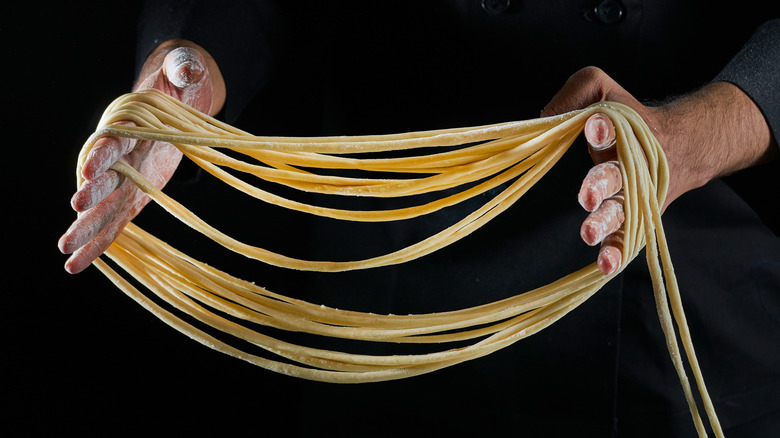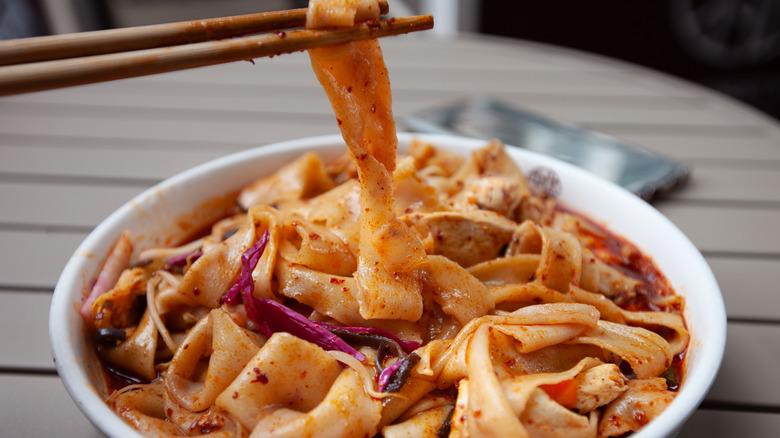The Process That Makes Some Asian Wheat Noodles Different From Italian Pasta
Turning flour and water into fresh pasta is a fairly straightforward exercise, and depending on what recipe you use, once pasta dough is mixed, it usually needs to be kneaded, allowed to rest, and then rolled out several times. There is a reason for this. In order for pasta to be at its best, the gluten that naturally occurs in the wheat needs to be activated, so the dough is elastic enough to be stretched to its limit. The most efficient way to do this is by kneading the mass, then rolling it over and over again until the floury mass becomes stretchy and sleek.
But rolling pasta isn't really an option in most Asian kitchens that lean into wheat noodles as their main carb; although, you might see modern Japanese noodle chains like Marugame Udon use machines to first roll, and then cut their udon noodles onsite. Instead, some types of wheat-based Asian noodles are kneaded by hand for an extended period of time, before it is divided into portions. Each handful of dough is then further pulled, stretched, twisted, and folded several times over until the dough literally becomes a handful of noodles.
The magic of la mian
Hand-pulled noodles are said to have come from northern China, where written records show they became a staple during the Han Dynasty (206 BCE and 220 CE). This type of wheat noodle is known as "la mian," which is literally Chinese for "pulled noodle."
Just as there are different types of pasta, there are also different types of la mian. The most popular version of this handmade noodle comes from an area of China's Gansu province known as Lanzhou. There, the dough used to make la mian is not just kneaded and tugged, it is even bounced against a wooden board so that it produces thin strands of nearly identical length and width, which are then served in a beef soup.
To the north in Xinjiang, la mian is less delicate and more toothsome so it can be stir-fried with meat and vegetables. Then there is Shaanxi province's biang biang noodle, a thicker, longer version of hand-pulled noodles, topped simply with a sauce seasoned with chili oil.
Another variety of la mian is known as dragon's beard, where the dough is pulled to produce thin noodle strands, so fine that they will fall apart if they are cooked. Because of this, this type of noodle is said to be only pulled for show.

